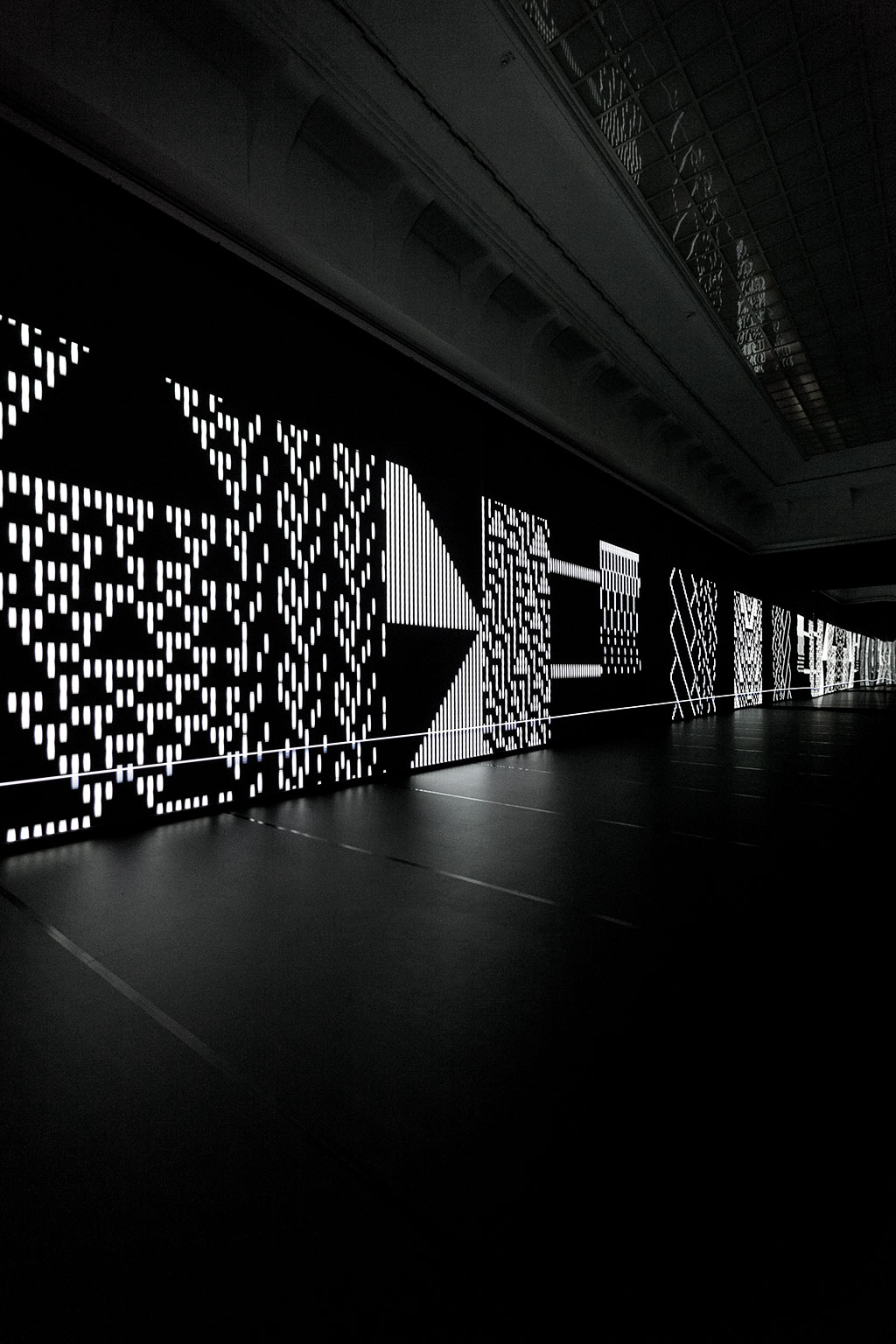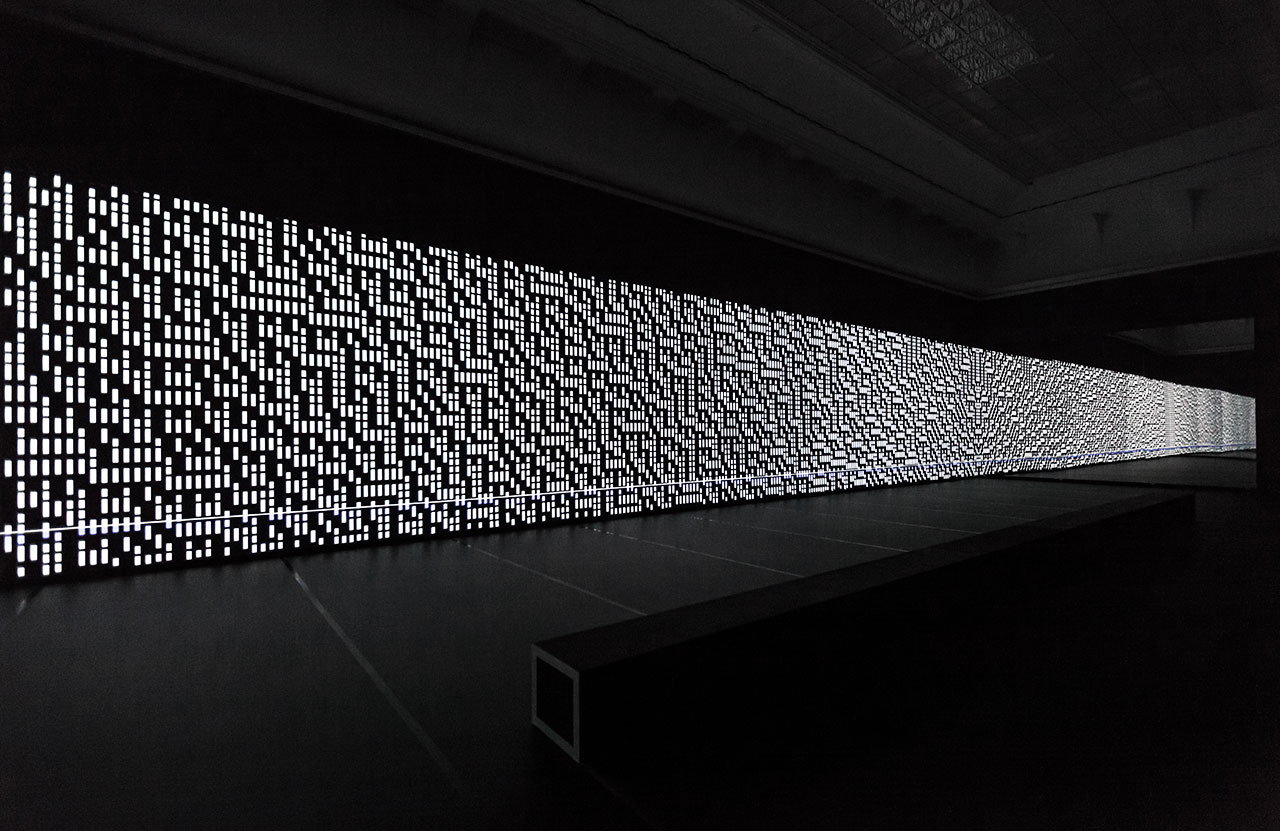the installation unitape offers an examination of laws of perception on graphic structures of which look like punched cards. images interact with sounds from loudspeakers. the projection is exemplary of the principle of encoding complex visual information in a digital language – as in the case of punched cards. the acoustic signals continue this principle by being themselves initially produced in a computer as encoded information. the infinite number of possibilities of encoding visual or acoustic information and transferring this to another medium can be experienced in the mirror faces to the sides of the projection which visually expand the latter ad infinitum.
the backdrop and stimulus for this work are to be found in the artist's involvement with the history of the city of chemnitz, which used to be one of the most important locations of the german textile industry. the invention of the mechanical loom by joseph-marie jacquard (1752–1834) was one precondition for this as it enabled the swift production of complex patterned fabrics using the principle of automated control by punched cards. around 1830, this loom was introduced to saxony, in the area around chemnitz, where it revolutionized textile production, as it did throughout europe. through his preoccupation with punched cards, which could be seen as an early form of digital storage media, carsten nicolai reflects on communication processes in the industrial era while at the same time addressing issues related to the socio-psychological aspects of the interaction between man and machine. the work is also a reference to industrial history in europe in general, and the history of the city of chemnitz in particular.

